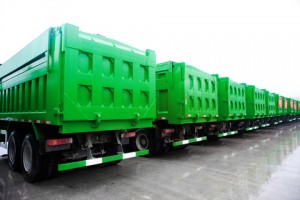A boost in equipment and maintenance doesn’t necessarily need a brand new device or technology. Sometimes, a great change can come from doing something differently.
That’s the case with nitrogen tire inflation, the practice of inflating tires with nitrogen instead of compressed air. Nitrogen has been used by the airline industry and NASCAR for decades, and has only recently begun to make its way into the trucking industry.
“The two largest costs for trucking fleets are tires and fuel,” said Ken Lawton, CEO of Nitrofleet99. Nitrofleet99, based in Brentwood, Tenn., is a nitrogen tire inflation systems firm that has worked with various trucking fleets around the country.
“Managed fleets are the biggest beneficiaries of nitrogen tire inflation,” Lawton said. “By using nitrogen, there is an increase in fuel economy and an improvement in mileage and carbon emissions.”
Air is already 78 percent nitrogen, but it’s not necessarily the nitrogen that improves tire performance. It’s the other 21 percent of the air that’s the problem. That other 21 percent includes oxygen and water vapor. The oxygen reacts with the rubber, destroying it over time. The water vapor makes the tire more susceptible to temperature changes, causing the tire pressure to fluctuate. The nitrogen used is a dry gas that isn’t affected by the rubber or the temperature changes.
That’s the exact philosophy behind Wood County Bandag, a truck tire retreading company in Bowling Green, Ohio. President Jim Keiser said that a client mentioned the idea eight years ago, and now utilizes nitrogen in every single tire retreaded and every single tire in its own fleet of 16 vehicles.
“There isn’t one reason for a trucking company not to be using it,” Keiser said. “There’s a whole list of benefits, and it saves them money.”
Keiser explained the temperature buildup that takes place as trucks spend the long hours driving affects the air pressure as well as the quality of the ride. As air-filled tires warm up, they increase in pressure, so much so that the driver “feels each bump like there are stones underneath the tire.”
“The temperature builds up as the tire has less pressure,” Keiser said. “The road running temperature of a tire is 190 degrees. If the tire gets up to 250 degrees, it will fail within an hour. At 275 degrees, it will fail catastrophically.”
Ever since Wood County Bandag implemented nitrogen, Keiser said that the fail rate of those tires is exponentially lower. That’s something that trucking fleets around the country are noticing.
“You get a more consistent tire pressure,” said Dave Kuppler, Group Manager of Health and Environmental Services for the City of St. Peters, Mo. “They aren’t working at optimum if the tire pressure is low.”
The City of St. Peters started using nitrogen tire inflation five years ago on its entire fleet of 261 vehicles, which includes everything from police cars to solid waste trucks. The city noticed that the tires on its vehicles kept on coming in with low tire pressures.
“With nitrogen, we use less tires and gas and it saves money,” Kuppler said. “The tire pressure is better, which is also better for safety.”
Chad Sanders, Founder of N2Generator, agreed that nitrogen tire inflation can lower the risk of a blowout because the nitrogen maintains proper tire pressure three to four times longer with less fluctuation than regular air. N2Generator is a nitrogen systems dealer based in Woodstock, Ga. that primarily works with automotive dealerships, but has also worked with smaller trucking fleets.
“If a fleet owner sees a 20 percent increase in tire life and a seven percent increase in fuel economy, that’s upwards of a million dollars in savings,” Sanders said.
How does nitrogen maintain proper tire pressure longer than air? The air molecules are three to four times smaller than nitrogen, so they have harder time migrating through the casing. Also, as mentioned previously, the fact that the nitrogen used is a dry, inert gas also makes a difference in maintaining proper tire pressure.
Proper tire pressure and improved mileage were the exact things that Allied Republic found when it conducted a test of nitrogen tire inflation on a small portion of its fleet. The original testing was conducted in the fall of 2008, when a regional vice president thought that the new technology was worth exploring. Allied Republic has over 60,000 vehicles in its fleet, and now uses nitrogen in the tires of every single one of them.
“The original testing we did across 300 [trucks] in service and new trucks in our fleet showed us that after 90 days of monthly preventative maintenance, fuel usage improved by one to two percent on new trucks and between three to four percent on in service trucks,” said Robert McClellon, General Manager for Allied Republic. “We were all pretty amazed.”
A few percentage points may not seem like a lot of benefit, but for a fleet of 60,000, a few percentage points can add up to immense savings. It might not be the seven percent that Sanders said, but with gas at all-time highs, and fuel approximately 25 percent of the costs of an average trucking fleet, every little bit of savings can affect the bottom line.
“This is a chance to have a better maintenance program,” said Lawton of Nitrofleet99. “The bigger the fleet, the bigger the benefit.”
WDFDD9WGTT3N






